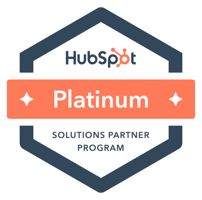
The Different Kinds of Sales Automation Strategy
No two companies will ever deploy identical automation strategies for their sales processes. However, it's common for several organizations to deploy similar approaches. Three types of sales automation strategy that are both popular and effective include:
Fix > Automate
With this approach, your first focus is on elevating your current sales process to "best in class" status and then automating that process at a future time. For example, you could refine your sales prospecting strategy to target high-value accounts, and subsequently automate parts of that strategy to make it more efficient.
Automate > fix
This is the opposite approach to strategy #1. Many organizations find it more useful to automate their processes first, and then continuously "tweak" them as time goes on. In the example mentioned above, this may mean setting up a database of sales prospects and then sending out automated messages to each contact in the list. Then, you could gradually cull the list and refine your targeting methods.
Fix > outsource
Finally, you could choose to optimize your sales process in terms of concept and manual execution. You can then outsource whichever tasks can be automated to a third-party service provider. This is a great option for companies that don't have the resources or "bandwidth" to set up and maintain automated systems in-house.
Again, all three approaches are valid and come with their unique set of strengths and weaknesses. The route you take should depend to a large extent on the current capabilities and long-term goals of your business.
Helpful Principles for Your Sales Automation Strategy
Your specific approach to sales automation may be far different from that of your competitors. However, there are still fundamental principles that should inform any strategy you implement. Here are 4 key principles to keep in mind as you develop your sales automation procedures:
1. Automating inefficient processes only leads to inefficient automation.
It's important to thoroughly audit your overall sales process in order to identify any "structural weaknesses" or redundant tasks that can be eliminated from the final product. As a simple example, imagine that it was part of your process to send out two confirmation emails to a customer after their order was placed. It's true that automating the second email would save your sales reps time and effort. But it wouldn't add any value to your workflow since the second email was unnecessary in the first place!
The point is, if you can identify and eliminate inefficient processes early on, your automation system will be leaner and more efficient from the outset.
2. Capabilities are more important than deadlines.
It's natural that you want to roll out your new sales automation strategy by a certain date. In fact, it's good to have deadlines in place as progress markers, if nothing else.
However, you should never lose sight of the ultimate purpose of sales automation: To reduce the workload on your sales team while maximizing efficiency. If you become fixated on roll-out deadlines, your implementation may end up outpacing the actual capabilities of your automation system. This can lead to confusion, frustration, and even some sunk costs. It may be best to measure the progress of your automation strategy in terms of role-by-role capabilities achieved, instead of deadlines met.
3. Your automation strategy should focus on adding clear, data-driven value to your sales process.
Sales automation can provide huge benefits to any organization in terms of speed, quality, agility, and flexibility. However, you should never implement automation for automation's sake. It's important to prioritize those automation use cases that will add the greatest value to your sales process, as measured by hard data. As you're developing your strategy, you may want to look at metrics such as man-hours lost/saved, contacts reached, conversations initiated, pieces of content delivered, etc. Those tangible metrics can serve as helpful benchmarks for success moving forward.
4. Your IT support should be as robust as your automation system.
Effective IT support is crucial in several aspects of a sales automation strategy, including:
- Training. IT professionals can train frontline workers on how to effectively use and manage automation tools.
- Planning. Feedback from your IT team can help you to optimize your automation system by focusing on features that will add the most value to your business.
- Security. IT plays a big role in terms of ensuring that security clearances are accurate, up to date, and role-appropriate.
Whether your IT support is in-house or outsourced, it needs to play an integral role in developing, implementing, and maintaining your automation system. Think of IT support as the "oil" that will keep the engine of your sales automation well-lubricated and operating smoothly.
The Benefits of an Effective Sales Automation Strategy
The advantages of an effective sales automation strategy are too numerous to list in full. They include improvements in your "pre-sales" process, such as more accurate market projections, more intensive data mining in preparation of key sales calls, and a broader pool of prospects that your team can tap into. Sales automation tools can also provide you with real-time insights from customer behavior data. This can help you improve customer satisfaction and first-time call resolution (FCR) scores at your sales center. Really, the sky's the limit!
Would you like to learn more about how to develop and execute a winning sales automation strategy? Reach out to our team of friendly experts at OverGo Studio today for a free consultation. We'd be happy to answer any questions you have!
Take advantage of our free Hubspot CRM Configuration to start modernizing your sales process. This is a limited-time offer where we will design a sales pipeline specifically for your business. Start generating more revenue and improve your close rates by building your first high-performing sales pipeline on HubSpot at no cost. Simply schedule a discovery session with our team of HubSpot experts.


